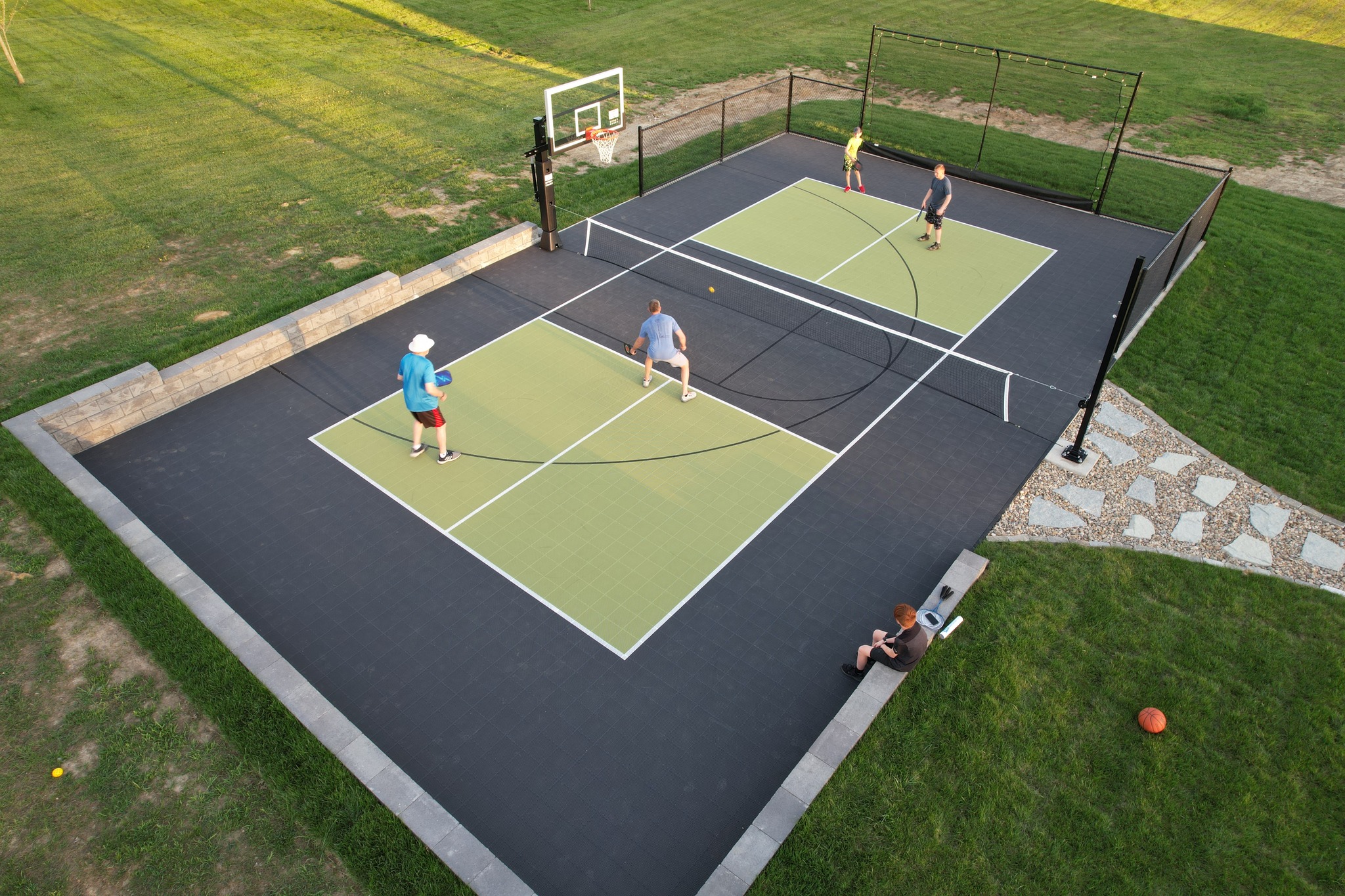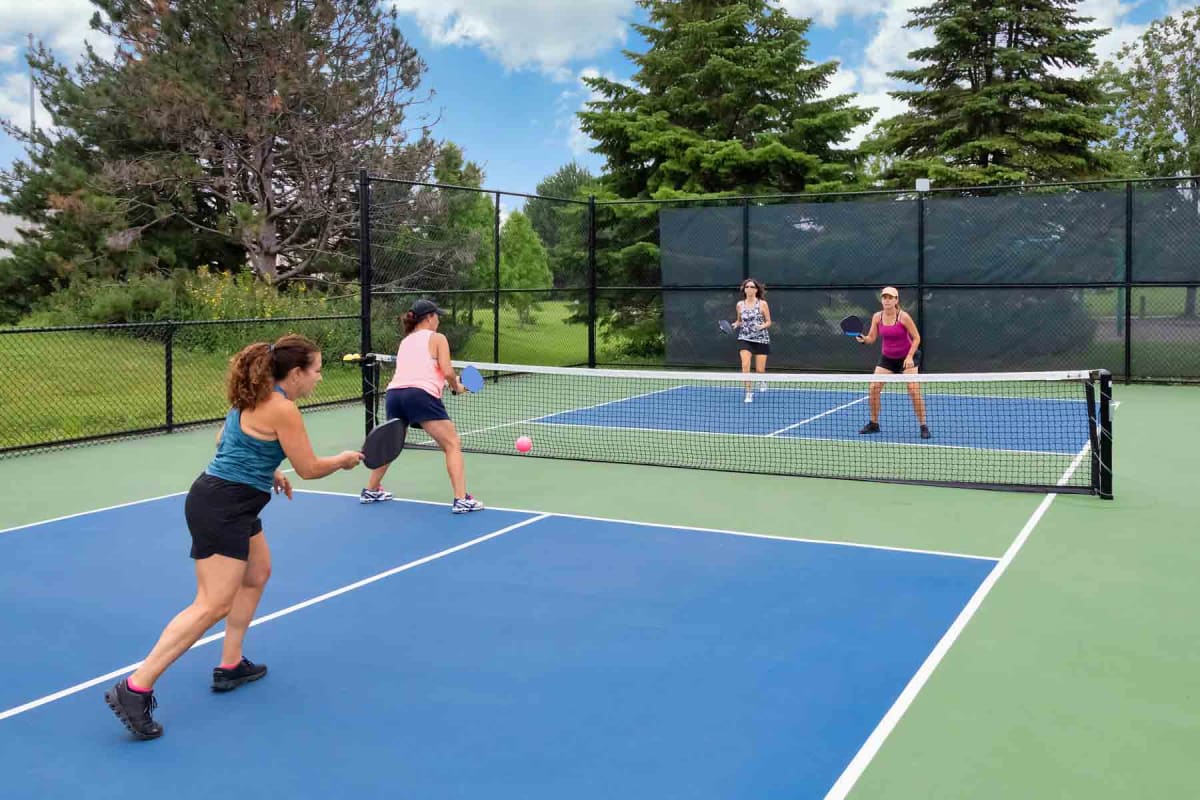Navigating Laws for Pickleball Court Building in Your Location
Building a pickleball court in your location needs a nuanced understanding of various local laws, including zoning laws, building permits, and safety and security criteria. Engaging with neighborhood authorities and the area is vital for making certain compliance and fostering assistance.
Understanding Regional Zoning Regulations
When thinking about the building and construction of a pickleball court, understanding regional zoning regulations is crucial to ensuring compliance and preventing possible legal concerns. Zoning regulations determine just how land can be used and usually consist of requirements relevant to recreational centers. These laws can vary dramatically by municipality, influencing elements such as court positioning, lighting, sound, and size degrees.
Before initiating construction, it is important to speak with the local zoning board or planning division to ascertain the details guidelines that put on your residential property. Certain zones may restrict leisure activities, while others may require specific permits or adherence to specific standards. It is additionally essential to think about setbacks, which establish just how far structures have to be from building lines or other buildings.
Furthermore, private advancements, such as home owner organizations (HOAs), might impose their very own regulations regarding the construction and use pickleball courts. Recognizing these laws can stop expensive modifications or lawsuits down the line. Engaging with neighborhood stakeholders and area members can offer important understandings and foster support for your task, making sure that it aligns with the area's expectations and demands.
Obtaining Necessary Structure Permits
Exactly how does one navigate the complexities of getting required structure permits for a pickleball court? The procedure begins with comprehending local guidelines and requirements set forth by metropolitan authorities. Usually, you will certainly need to send a detailed site strategy that outlines the suggested court measurements, materials, and design. This strategy ought to adhere to zoning regulations and any kind of particular laws referring to entertainment facilities.

As soon as permits are obtained, it is critical to abide by any type of examination schedules and requirements throughout the building stage. Maintaining communication with regional authorities will certainly promote a smoother authorization process and help prevent prospective obstacles. By extensively preparing and understanding the permitting landscape, you can efficiently navigate the intricacies associated with creating a pickleball court while continuing to be certified with all local guidelines.

Assessing Environmental Effect
An extensive evaluation of environmental influence is necessary when planning the building and construction of a pickleball court. This analysis aids determine prospective results on regional communities, water resources, and neighborhood visual appeals. Key aspects to take into consideration consist of site choice-- guaranteeing that the court is not developed on environmentally sensitive land, such as marshes or habitats for jeopardized species
Dirt stability and drain patterns must be examined to avoid disintegration and water pooling, which could adversely impact bordering plants and wildlife. In addition, the option of materials is vital; deciding for sustainable and environment-friendly choices reduces environmental injury.
The application of reliable stormwater administration practices is one more essential element, as it assists minimize drainage and sedimentation. Engaging with regional ecological agencies can offer beneficial understandings right into guidelines and finest methods details to your area.
Lastly, area input can be beneficial in recognizing any local ecological worries and promoting assistance for the job. By conducting a detailed ecological influence evaluation, stakeholders can make certain that pickleball court building and construction aligns with lasting practices and contributes positively to the neighborhood's eco-friendly wellness.
Conforming With Security Standards
Ensuring compliance with safety and security requirements is crucial for the effective building and construction and procedure of a pickleball court. Following recognized security laws my explanation decreases the danger of accidents and injuries, making sure a secure setting for gamers.
Secret safety and security requirements consist of appropriate court dimensions, surface products, and lighting needs. The court must fulfill the official measurements of 20 feet broad by 44 feet long for doubles play, with ideal barrier zones to stop injuries from wayward balls. Pickleball court construction. The surface needs to be constructed from non-slip materials to boost grip and lower the probability of drops
In addition, illumination must suffice for night play, supplying consistent lighting to avoid shadows that can prevent presence. Regional building regulations may likewise dictate certain demands for fence and net height to make certain player safety and prevent unapproved access to the court location.
Regular evaluations and maintenance are necessary to promote these standards in time. By focusing on security conformity, court proprietors not only safeguard players however additionally promote a positive credibility within the area. This commitment to security can urge better engagement and pleasure of the sport, inevitably adding to its development and sustainability.

Engaging the Neighborhood in Planning
Neighborhood involvement in the drawing board of pickleball you can find out more court building can significantly improve the project's overall success. Engaging local citizens and stakeholders fosters a feeling of ownership and urges collective decision-making, which can cause wider support for the campaign.
To successfully involve the area, organizers need to start public conferences or workshops, giving a platform for homeowners to voice their viewpoints and choices pertaining to area, layout, and amenities. Studies and comments navigate here forms can additionally be utilized to gather understandings from a wider audience, making sure that diverse point of views are thought about.
Furthermore, forming an area board of advisers can facilitate continuous conversations and address issues throughout the planning procedure. This board can consist of agents from different demographics, such as local colleges, entertainment companies, and area organizations, thus amplifying area representation.
Reliable communication is essential; updates about the job must be routinely shared through e-newsletters, social media, or regional notices. By focusing on area interaction, organizers can grow enthusiasm, mitigate potential opposition, and create a pickleball center that truly resonates with neighborhood worths and needs. This joint strategy not just improves the job however additionally reinforces community connections.
Final Thought
Finally, browsing the intricacies of pickleball court building necessitates a comprehensive understanding of regional guidelines, consisting of zoning laws, structure licenses, and safety criteria. Conducting environmental evaluations is important to reduce ecological impact, while area engagement can improve assistance for such jobs. By sticking to these guidelines and fostering collaboration, successful execution of pickleball courts can be achieved, advertising entertainment chances and neighborhood health. Continued diligence in these locations will guarantee sustainable and certified advancement.
Creating a pickleball court in your location requires a nuanced understanding of various neighborhood guidelines, consisting of zoning legislations, structure authorizations, and security standards.When considering the building of a pickleball court, comprehending local zoning legislations is important to making certain conformity and preventing prospective legal issues. By completely preparing and recognizing the allowing landscape, you can successfully browse the intricacies included in creating a pickleball court while continuing to be compliant with all local policies.
In verdict, browsing the complexities of pickleball court building requires a comprehensive understanding of regional guidelines, including zoning laws, structure authorizations, and safety standards. By adhering to these standards and promoting partnership, effective implementation of pickleball courts can be accomplished, promoting leisure opportunities and neighborhood health.